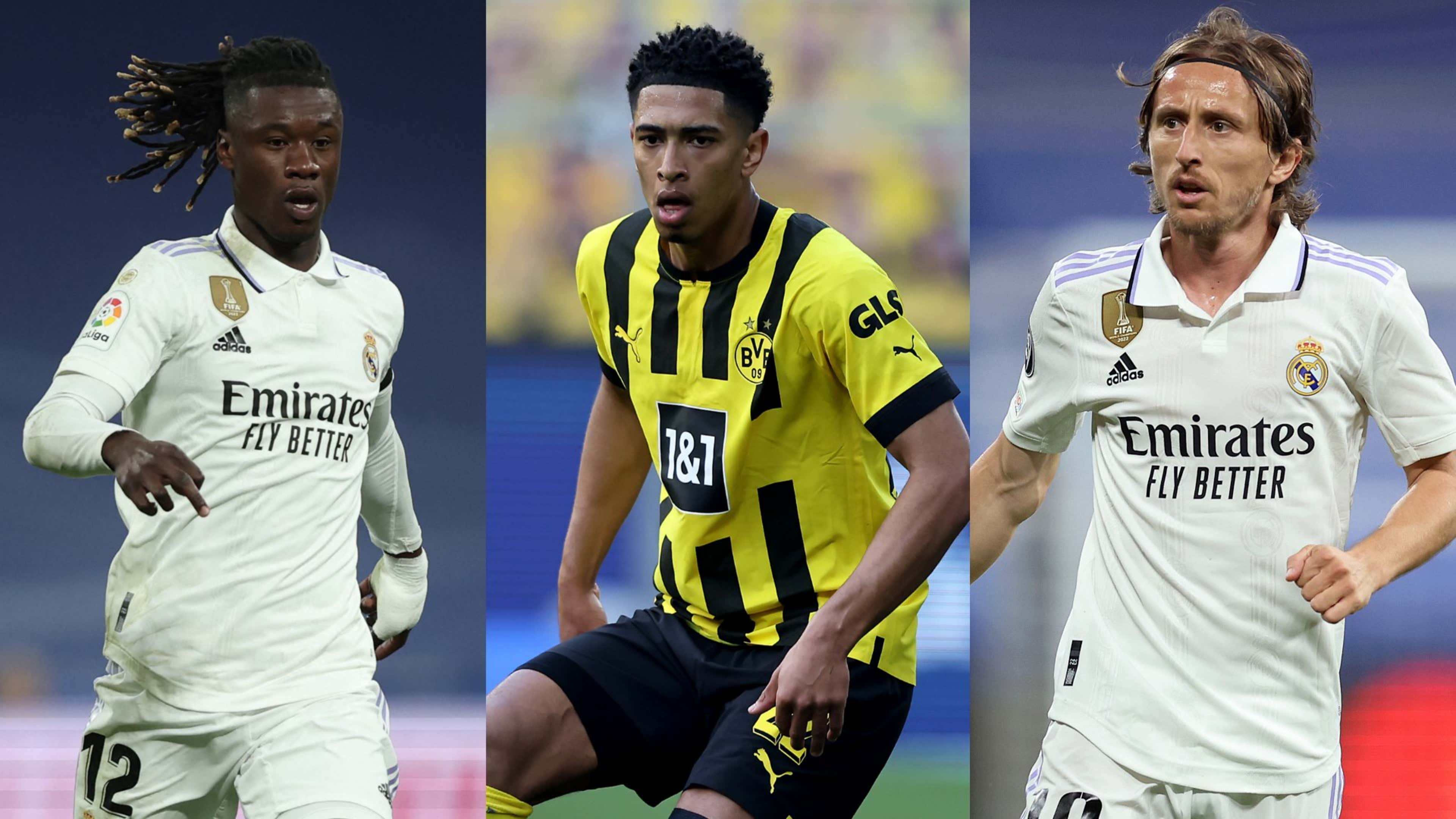Something has happened in Real Madrid with the signing of Jude Bellingham. Los Blancos' midfield might actually be too good. Manager Carlo Ancelotti suddenly has an embarrassment of riches at his hands, six potentially world-class midfielders to fit into four spots.
The natural response has been for the manager to suggest a switch in formation. Ancelotti admitted that he might play around with his side, and deploy new boy Bellingham as a No.10, a move that will allow him to fit three more of his world-beaters into the side. That's perhaps a dream scenario for Bellingham, who can run, create and shoot to no end — all while having the legs and defensive capability behind him to ensure that he has freedom to roam.
But that doesn't necessarily make things anything easier for the manager. He still has Luka Modric, Toni Kroos, Eduardo Camavinga, Federico Valverde, Aurelien Tchouameni and Dani Ceballos, with just three starting spots to fit them into.
Ancelotti has shown in the past that he doesn't mind rotation. Kroos and Modric are both aging, and presumably playing their last season at the club. But when fit, they should be in the side. That would mean benching two of Camavinga, Tchouameni and Valverde — a near-impossible task. And what of Ceballos, the forgotten man turned helpful utility player? He simply cannot be discarded, either. Meanwhile, the signing of "Turkish Messi" Arda Guler only further complicates things.
So, how does this all work? How can Ancelotti fit seven players into four spots, and who can play where? GOAL has a look at where every option could be used...
